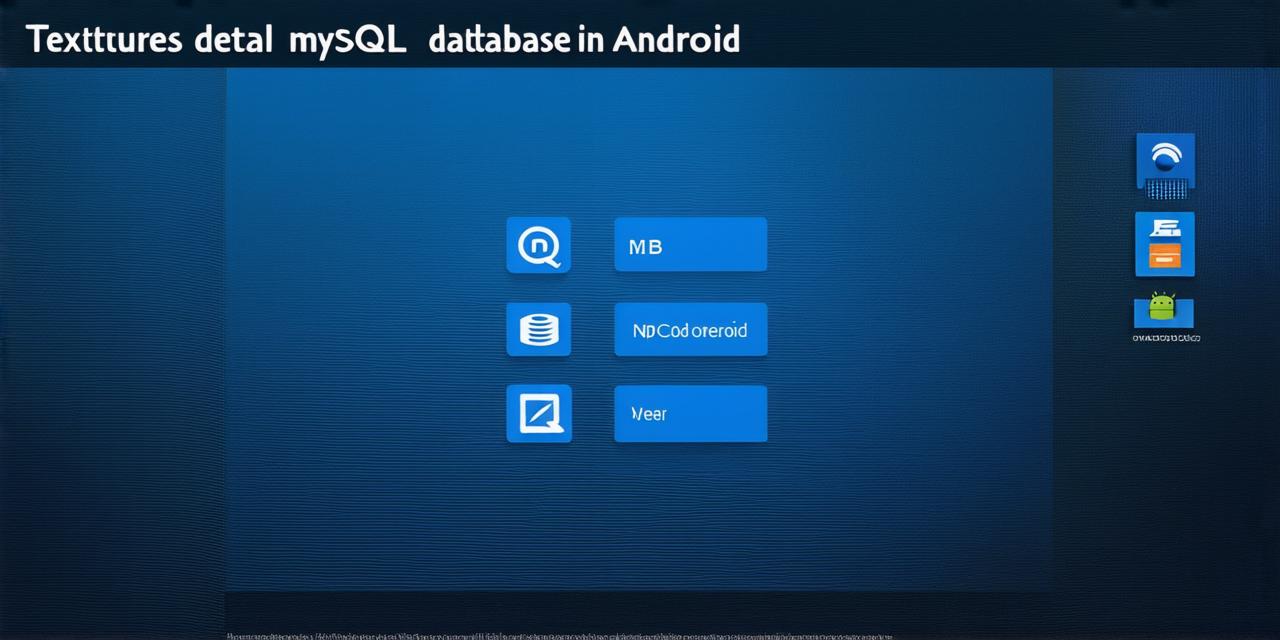Are you an Android Studio developer looking to establish a connection to a MySQL database? Look no further! In this article, we will guide you through the process of connecting to a MySQL database using JDBC in Android Studio. We will also cover best practices for maintaining a secure and efficient connection.
MySQL is a popular open-source relational database management system that can be used to store and manage data. It offers a range of features such as scalability, security, and flexibility, making it an ideal choice for mobile applications that require a powerful and reliable database.
To establish a connection to a MySQL database using JDBC in Android Studio, you will need the following:
- A running instance of Android Studio
- A MySQL server with a database created
- The MySQL Connector/J (JDBC driver for MySQL)
- A Java project in Android Studio
Once you have these prerequisites, follow these steps to establish a connection to a MySQL database:
-
Add the MySQL Connector/J JAR file to your project
-
Create a Java class for your database connection
-
Use the database connection in your Android application
-
Close the database connection when you’re done
Step 1: Add the MySQL Connector/J JAR file to your project
To add the MySQL Connector/J JAR file to your project, right-click on your Java project in Android Studio and select “Open Module”. Then, go to the “Build” menu and select “Add Classpath”. In the “Classpath” dialog box, click the “+” button and navigate to the location of the MySQL Connector/J JAR file. Select it and click “OK”.
Step 2: Create a Java class for your database connection
Next, you need to create a Java class that will handle the connection to your MySQL database. Open a new file in Android Studio and name it “DatabaseConnection”. This class should contain a method called “connectToDatabase” that will establish a connection to the MySQL server and return a Connection object.
<?xml version="1.0" encoding="utf-8"?>
 <!DOCTYPE html>
<html lang="en" dir="ltr">
<head/>
<body>
<p>import java.sql.*;</p>
<p>public class DatabaseConnection {</p>
<p>private static final String DB_URL = "jdbc:mysql://localhost:3306/mydatabase";</p>
<p>private static final String DB_USER = "root";</p>
<p>private static final String DB_PASSWORD = "mypassword";</p>
<p>public Connection connectToDatabase() {</p>
<p>try {</p>
<p><?xml version="1.0" encoding="utf-8"?></p>
<p><!DOCTYPE html></p>
<p><html lang="en" dir="ltr"></p>
<p><head/></p>
<p><body></p>
<p>Class.forName("com.mysql.jdbc.Driver");</p>
<p>return DriverManager.getConnection(DB_URL, DB_USER, DB_PASSWORD);</p>
<p></body></p>
<p></html></p>
<p></try></p>
<p>catch (ClassNotFoundException e) {</p>
<p>e.printStackTrace();</p>
<p>return null;</p>
} catch (SQLException e) {</p>
<p>e.printStackTrace();</p>
<p>return null;</p>
}
}
}
<!DOCTYPE html>
<html lang="en" dir="ltr">
<head/>
<body>
<p>import java.sql.*;</p>
<p>public class DatabaseConnection {</p>
<p>private static final String DB_URL = "jdbc:mysql://localhost:3306/mydatabase";</p>
<p>private static final String DB_USER = "root";</p>
<p>private static final String DB_PASSWORD = "mypassword";</p>
<p>public Connection connectToDatabase() {</p>
<p>try {</p>
<p><?xml version="1.0" encoding="utf-8"?></p>
<p><!DOCTYPE html></p>
<p><html lang="en" dir="ltr"></p>
<p><head/></p>
<p><body></p>
<p>Class.forName("com.mysql.jdbc.Driver");</p>
<p>return DriverManager.getConnection(DB_URL, DB_USER, DB_PASSWORD);</p>
<p></body></p>
<p></html></p>
<p></try></p>
<p>catch (ClassNotFoundException e) {</p>
<p>e.printStackTrace();</p>
<p>return null;</p>
} catch (SQLException e) {</p>
<p>e.printStackTrace();</p>
<p>return null;</p>
}
}
}In this example, we are using a static connection URL, username, and password. You will need to replace these values with the appropriate ones for your MySQL database.
Step 3: Use the database connection in your Android application
Once you have established a connection to your MySQL database, you can use it in your Android application. To do this, you will need to create a new Java class that will handle the data access.
